3d Building Design Software For Mac
Best 3D modelling and rendering software of 2021: Free and paid, for Windows, Mac, Linux, and online

The best 3D modeling software makes it simple and easy to build 3D shapes and structures from your designs, and render them.
Creating 3D models once required expensive software running on tailored operating systems and specialist hardware. Not any longer.
Most computers now have enough graphical performance to model reasonably complex designs, like the interior of a building or a 3D printable object.
And, where the applications once required specialist training and service contracts, there are now plenty of free or inexpensive tools that can help design complex shapes and mechanisms easily and efficiently.
With this evolution, 3D modeling software has diversified into specialist tools for creating prototype products, visual effects, simulation and other design features that are good across a number of industries, including architecture , interior design, landscape design, as well as mockup software for product ideas.
Whatever type of 3D output you need, an application exists that's perfectly suited to the task, and a pathway to develop the skills needed to use it effectively.
The choice might seem overwhelming, so we've created a guide to point you in the right direction from the start.
Here are what we think is the best 3D modeling and rendering software available.
Also check out the best graphic design software .
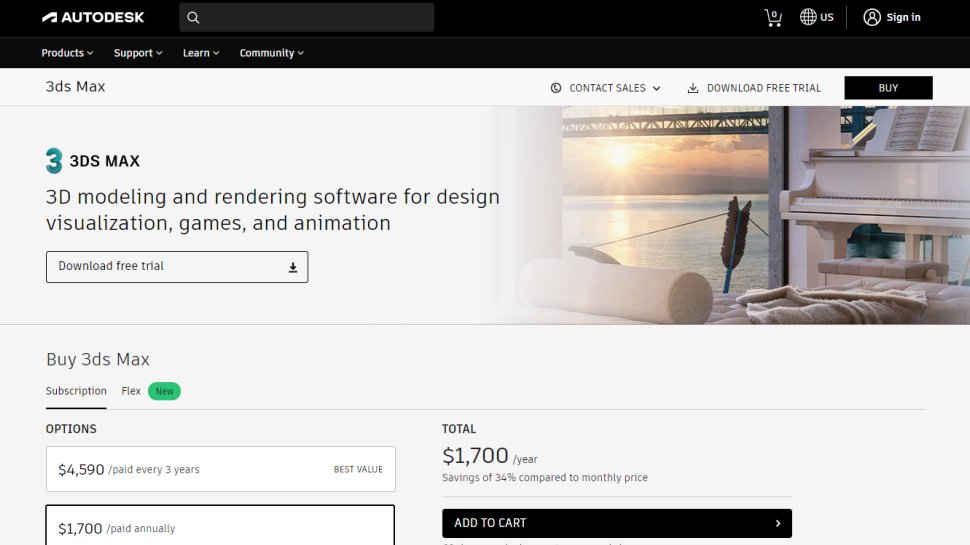
1. Autodesk 3DS Max
The all-purpose modeller for content creators
Reasons to buy
+Multi-facetted modeller +The tool of choice for game makers +Amazing plugins
Reasons to avoid
-Can lack stability -Expensive
The original Autodesk 3D Studio ran under DOS in 1988, but the current Autodesk 3DS Max (formally 3DS Studio Max) has been a Windows tool since 1996.
As a 3D modeling system, this one is especially popular with those creating animation, game assets and simulations. The standard features include skeletons and inverse kinematics, cloth simulation, skinning and character controls for bipedal motion.
If the software doesn't support the exact function or rendering mode you need, an extensive plugin system allows third-party modules to add this to 3DS Max. Some of these plugins are free, but the best ones are paid.
For modeling purposes, 3DS Max supports conventional polygon construction, NURBS and also patch surfaces. Images can be generated using a very wide range of rendering systems, including Renderman created by Pixar and mental ray.
With so much functionality, what's the downside the 3DS Max? There are a few.
The first is that if you use many plugins, then they can interact in somewhat unpredictable ways. And, complex plugins that stress the PC can make 3DS Max unstable on occasion.
The other issue with this product is the high price. A discount is available for a three-year commitment, but that still doesn't make this a cheap experience.

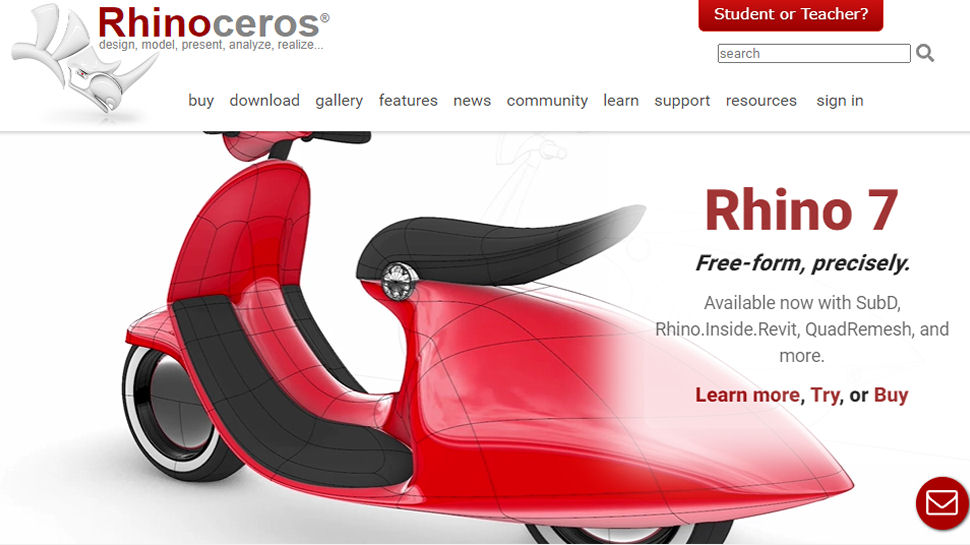
2. Rhino
The beast of curved surfaces design
Reasons to buy
+NURBS +Grasshopper +Permanent licensing
Reasons to avoid
-A steep learning curve
When Rhinoceros first appeared most 3D modeling systems did basic geometry and a few offered splines, but almost none of them could handle NURBS.
To accurately model the body of a vehicle or aircraft, NURB surfaces, with their ability to curve in more than one plane, are important. And, Rhino is the undisputed king of NURBS.
Available for both the Mac and PC, Rhino can sculpt objects, adapt LIDAR scans, work with meshes from other systems and even render scenes using raytracing.
Like 3DS Max this also has a plugin solution and a sophisticated developer platform for those wanting to create new ones. Alongside the plugins is a scripting language, enabling complex detailing or modification processes to be automated.
But even if you're not a software developer you can create enhanced functionality through Grasshopper, a tool for making form generation algorithms without writing code.
Overall, this product is superb for prototyping mechanical parts or creating concept designs and then having them turned into physical items using 3D printing.
Having used this tool in anger, our only reservations about it are that for someone coming from a more conventional modeling environment this learning curve can be a steep one. Although once you've mastered it, this is an extraordinarily powerful tool.

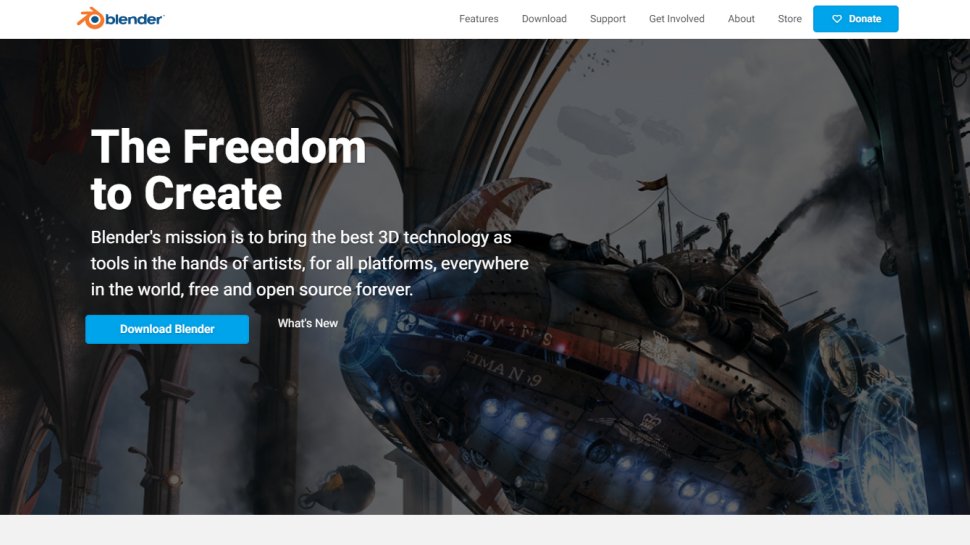
3. Blender
The best free 3D modeling software
Reasons to buy
+Free and open source +Full pipeline model +Great community support
Reasons to avoid
-Doesn't support NURBS
Blender is one of those tools that anyone can experience and use without worrying about the cost or if it will be updated. From the outset, it has been an open-source 3D creation tool that is free to use even for commercial purposes.
Where other tools focus on the modeling or rendering parts of the 3D process, Blender provides the entire pipeline from modeling, rigging, animation, simulation, rendering, compositing and motion tracking to video editing.
It even has a 2D animation pipeline, if you need to combine 2D elements with 3D models.
There was a time when Blender was the domain of hobbyists wanting to create animated space battles or giant robot films, but it has now evolved to the point where many commercial companies use it to create effects elements for big-budget movies.
As the source code for this software is open source, a large community has sprung up of developers that have extended the functionality in Blender to rival some of the most expensive solutions.
The pipelining aspect of this tool is perfect for a team to use, where artists can work on their part of a scene, and then watch it come together with elements created by others.
The latest feature is real-time rendering using the EEVEE engine, bridging the gap between what was previously possible in real-time and those effects that required exclusively offline processing.
As this product is free, you don't have any excuse if you've never tried it.

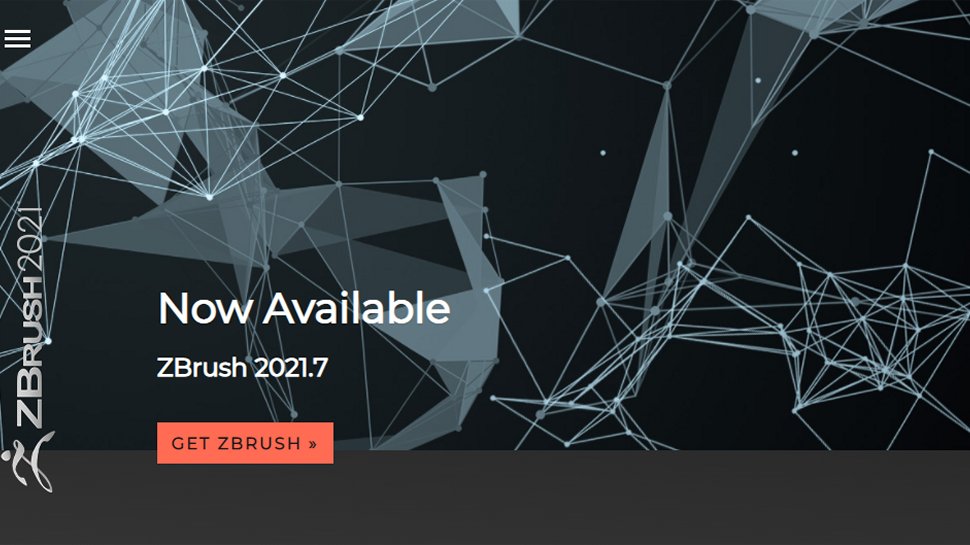
4. Zbrush
Digital claymation
Reasons to buy
+Photoreal rendering +A wide selection of Plugins +Non-linear design
Reasons to avoid
-Heading to subscription-only
Zbrush is a radical departure from convention when it comes to modeling objects in 3D, as it uses a brush system to enable designers to shape virtual clay in real-time.
Popular across a very wide range of industries, but especially so in the film and gamer developer sectors, and with concept artists.
The object construction system lends itself to creating new and interesting shapes, rather than painstakingly recreating existing objects in a 3D space.
Objects created by Zbrush tend to have a hand-formed feel, and the system can be used with pressure-sensitive pens and graphics tablets to help with the organic nature of this modeling method.
Another artist-friendly feature is a non-linear production path, allowing a design to be reverted to a previous iteration, a change be made, and then rolled forward again. This flexibility allows for mistakes, changes of mind, or design evolution to be part of the process.
At the moment you can get Zbrush either as a perpetual license or on a subscription model, but we suspect that it will soon be subscription only.

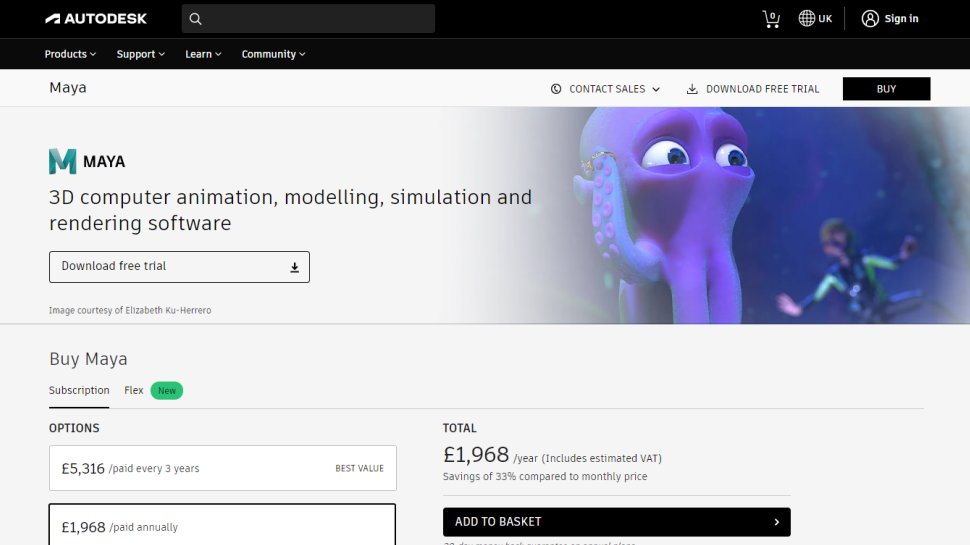
5. Autodesk Maya
Professional results, professional costs
Reasons to buy
+Industry-standard for character work +Procedural effects +Arnold rendering
Reasons to avoid
-Needs a powerful workstation -Expensive
Autodesk Maya was one of the first commercial 3D rendering systems to introduce hair and fur, and it remains an industry standard for creating and modeling characters in 3D.
Available for PC Windows, Apple Mac and Linux, Maya is the software equivalent of the magician's hat from which almost anything can be pulled.
Its strengths are character creation and movement, and the simulation of natural elements such as water, fire, sandstorms and explosions. The latest release now includes Bifrost procedural effects, enabling complex elements to be constructed using dynamic solvers.
Once a scene has been created and effects defined, photoreal rendering is available using the Arnold RenderView system for stunningly real results.
If you want some idea of what Maya can do then watch Stranger Things, as the Mind Flayer from season 2 was created and rendered in this software.
What is 3D modelling
We asked Penny Holton, Senior Lecturer in Animation at Teesside University what her definition of 3D modelling is
3D modelling is a vital part of the computer graphics process. It is the creation of objects in 3D space. There are now a number of ways to create 3D models and the techniques can be split broadly into two areas. Hard surface modelling where you use 3D polygon shapes and vertices to form an object, and digital sculpting where you work with virtual clay.
Hard surface is good for modelling things like buildings and cars, where digital sculpting is better for organic structures such as characters and animals. 3D models can be created for a variety of applications from product design, engineering and architecture to movies, games and commercial advertising.
What sort of computer do you need?
It depends on what you want to do. If you just want to have a go, then you should be able to get Blender working on a slightly above average PC (or laptop), such as an Intel Core i5 with a decent graphics card and at least 8GB of RAM. As soon as you start to want to create detailed computer-generated imagery and visual effects, you will need to upgrade. But then, you don't even need a desktop computer. There are smartphone apps which let you have a go at basic sculpting and modelling and you can add effects to your home movies. There are also some nice 2D animation apps if you want to make things move.
We've also featured the best painting and drawing software .

Mark is an expert on displays, reviewing monitors and TVs. He also covers storage including SSDs, NAS drives and portable hard drives. He started writing in 1986 and had contributed to MicroMart, PC Format, 3D World among others.
3d Building Design Software For Mac
Source: https://www.techradar.com/best/best-3d-modelling-software
Posted by: chalfantretticuld.blogspot.com

0 Response to "3d Building Design Software For Mac"
Post a Comment